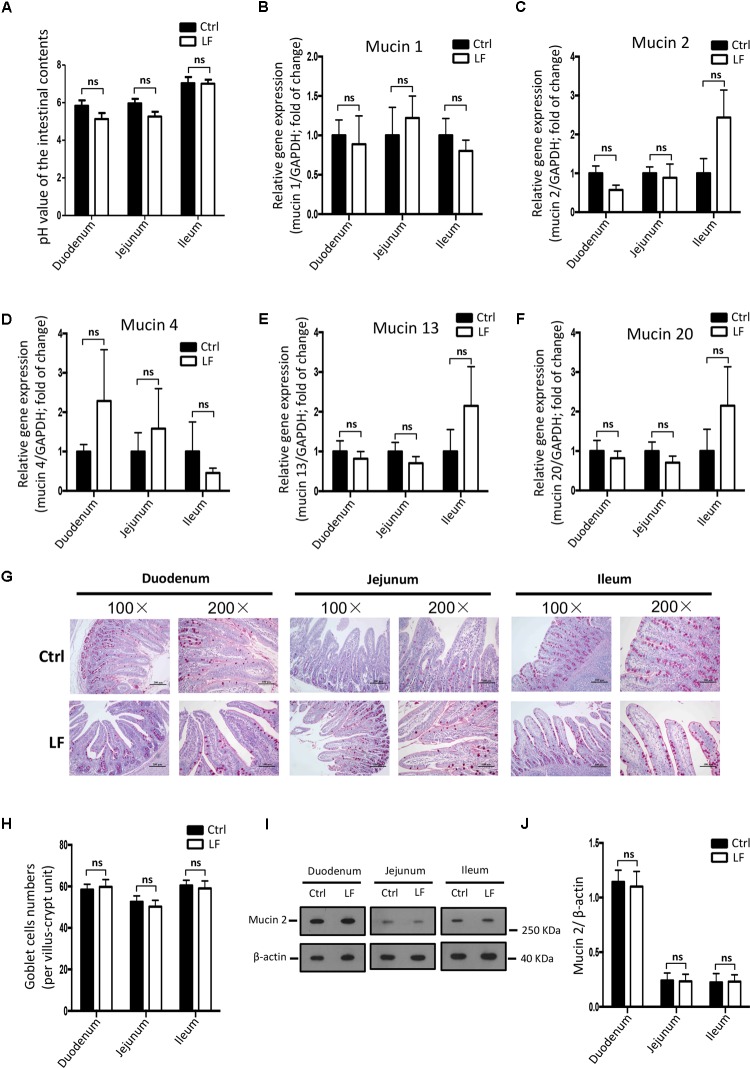FIGURE 3.
The effects of L. frumenti on the intestinal epithelial chemical barrier functions in early-weaned piglets. (A) The pH values of the intestinal contents in small intestinal tissues (including duodenum, jejunum, and ileum) from early-weaned piglets. Data are represented as mean ± SEM (n = 5; ns, not significant) (Ctrl, Control; LF, L. frumenti). (B–F) The relative mRNA expression of intestinal mucins proteins measured by Q-PCR. Normalization and quantitation of Mucin 1/GAPDH (B), Mucin 2/GAPDH (C), Mucin 4/GAPDH (D), Mucin 13/GAPDH (E), and Mucin 20/GAPDH (F) were shown in bar chart. Data are represented as mean ± SEM (n = 5; ns, not significant). (G) The intestinal goblet cells shown by PAS staining of duodenum, jejunum, and ileum tissues of weaned piglets. The images of intestinal morphology at 100× magnification and 200× magnification were shown, respectively. (H) The statistical analysis of intestinal goblet cells numbers in duodenum, jejunum, and ileum tissues of weaned piglets. Data are represented as mean ± SEM (n = 5; ns, not significant). (I,J) Western blotting measurements of the expression levels of mucin 2 protein and a housekeeping protein (β-actin) in the small intestinal tissues (including duodenum, jejunum, and ileum) from early-weaned piglets (I). Normalization and quantitation of mucin 2/β-actin as prepared described in (J). Data are shown as mean ± SEM for at least three different experiments (ns, not significant).

